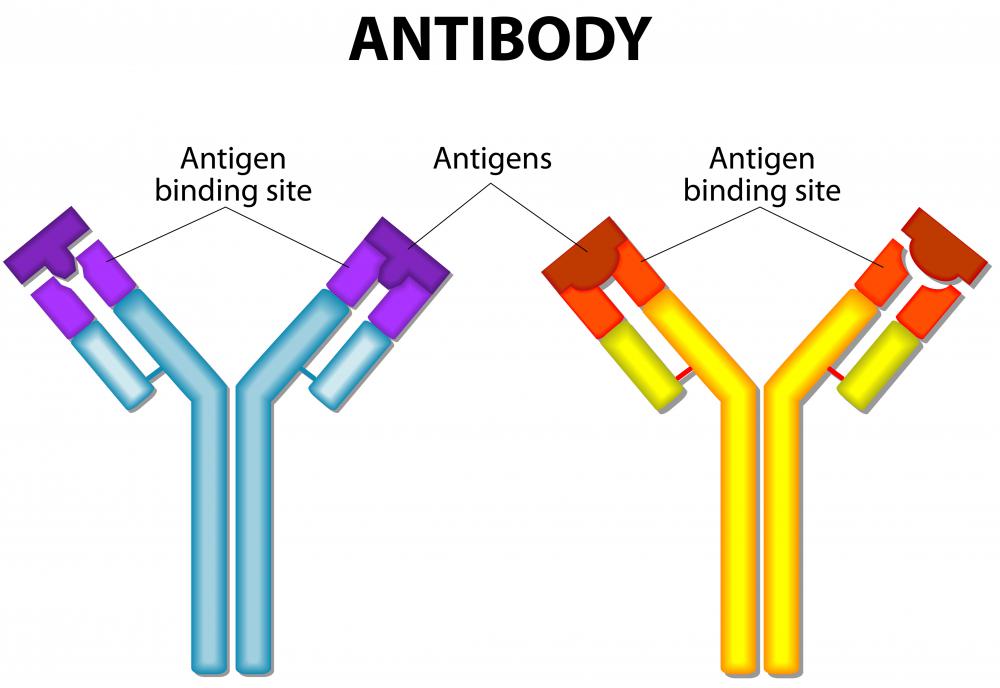At TheHealthBoard, we're committed to delivering accurate, trustworthy information. Our expert-authored content is rigorously fact-checked and sourced from credible authorities. Discover how we uphold the highest standards in providing you with reliable knowledge.
What Is an Fc Receptor?
Fc receptors are found on immune system cells known as phagocytes, which are able to consume harmful substances, or antigens. Each Fc receptor is able to attach itself to what is called the Fc region on an antibody. Antibodies are special proteins produced by immune cells, which bind to antigens such as microorganisms, toxins or allergic substances. They are able to neutralize them or mark them for destruction by the immune system. When an Fc receptor on an immune cell binds to an antibody and its attached antigen, this can trigger phagocytosis, where the antibody-coated antigen is consumed.
Different types of antibodies exist, each specific to a different antigen. This means that different Fc receptors also exist, each able to bind to an antibody at its Fc region. Antibodies are also known as immunoglobulins, Ig for short, and the type known as IgG is most commonly found in the blood.

IgG antibodies are Y-shaped protein structures made up of different regions. The two arms of the Y are known as Fab regions, where Fab stands for fragment, antigen-binding. Fc is the tail region, with Fc standing for fraction, crystallizable. Fab regions attach to antigens while the Fc region binds to Fc receptors on the surface of a cell. An Fc receptor-like molecule has also been detected on immune cells known as B lymphocytes, but its function is not fully understood and it does not appear to bind to Fc regions on antibodies.

Phagocytes, which effectively eat harmful particles such as microbes, are a group composed of different types of cells with IgG-binding Fc receptors on their surfaces. They include the immune system white blood cells known as macrophages and neutrophils. Cells in the immune system known as natural killer cells are also covered in Fc receptors which bind to IgG. Natural killer cells produce factors which cause the death of harmful cells such as bacteria and attract other immune cells to help destroy them. An Fc receptor which binds to a different antibody, IgE, is found on the surface of mast cells, which respond to antigens such as pollen by releasing substances that cause inflammation.
Sometimes a process known as antibody-dependent enhancement occurs, where the presence of an Fc receptor helps a virus to enter a cell. The cell does not have any of the receptors needed by the virus for entry, but when the virus is attached to an antibody it is able to bind to an Fc receptor through the Fc region on the antibody. This enhanced ability to enter cells leads to increased infection occurring.
AS FEATURED ON:
AS FEATURED ON:












Discuss this Article
Post your comments